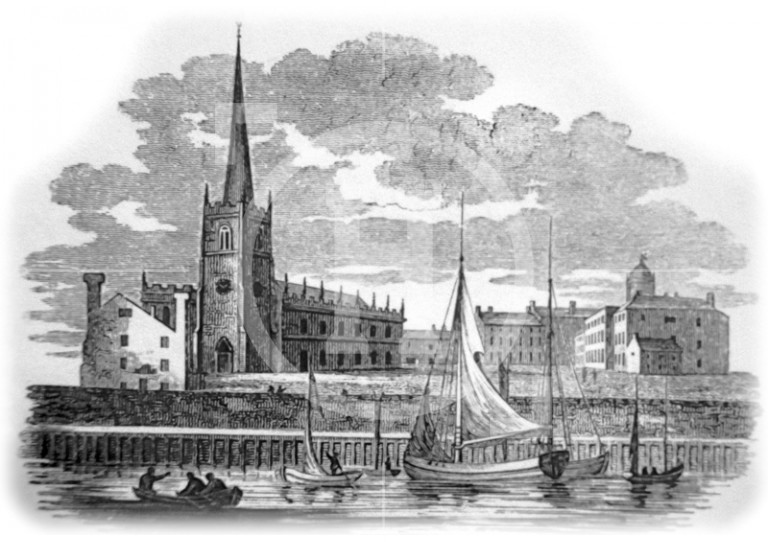On the morning of Sunday, 11th. February, 1810, a few minutes before the beginning of divine service and just as an officiating clergyman was entering the Parish Church of St. Nicholas, the key stone of the tower gave way and the north east corner walls and the whole of the spire collapsed. It broke through the roof along the central aisle and with it came the whole peal of six bells and the west gallery, demolishing the organ, the clergyman's reading desk and a number of pews. Not more than twenty people were in the church at the time but a procession of children from the Moorfields Charity School, led by the girls, had already entered. Those who were proceeding up the aisle or in the porch were overwhelmed. Despite the continuing threat from the dangerous structure, many joined in the rescue. Altogether, 27 bodies were recovered from the rubble; 22 had either been killed or died shortly afterwards. All the bell-ringers escaped, although one had been rescued from the ruins. The Rev. Roughsedge, the Rector, owed his survival to the fact that he had entered the church by an unaccustomed door, and an officiating minister to the fact that he had been prevented from getting in by the school-children who were pressing forward. A teacher who had just cleared the way for him was one of those who were killed. Tragically, members had repeatedly warned officials that the spire was unsafe.


